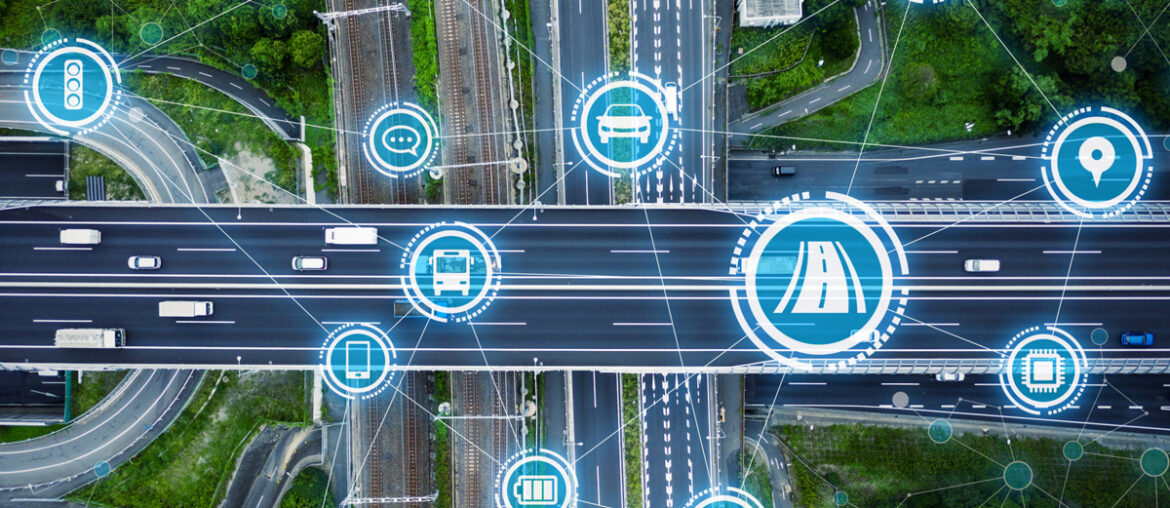Efficiency is a key element of effective last-mile delivery. Every minute saved, every optimized route and every streamlined process can make a significant difference in meeting customer expectations and staying ahead of the competition. That’s where telematics comes in. This blog post will explore what telematics is, why it’s crucial for last-mile delivery and the vital role it plays when combined with route optimization platforms.
What Is Telematics?
Telematics refers to the integration of telecommunications and informatics to transmit data over long distances. In the context of last-mile delivery, telematics involves the use of GPS technology and onboard sensors to collect and transmit real-time data about vehicles, drivers and their activities. This data typically includes information such as vehicle location, speed, fuel consumption, engine diagnostics and driver behavior.
Importance of Telematics in Last-Mile Delivery
Telematics is a game-changer for last-mile delivery operations for several reasons. Firstly, it provides unparalleled visibility into the entire delivery process, allowing businesses to track the precise location of vehicles and monitor driver performance in real time. This visibility enables companies to optimize routes on the fly, respond quickly to changing conditions and ensure timely deliveries.
While telematics provides valuable data about vehicle and driver activities, its true potential is unlocked when combined with route optimization platforms like RouteManager. Routing platforms leverage telematics data along with advanced algorithms to dynamically plan and optimize delivery routes in real time.
By integrating telematics devices with route optimization software, businesses can harness the power of data-driven insights to:
- Enhance Vehicle Routing Efficiency: Telematics systems provide real-time tracking of each vehicle, empowering fleet managers to plan and adjust routes dynamically. By detecting potential obstacles like weather or traffic delays, telematics devices enable managers to swiftly find alternative routes, ensuring deliveries stay on schedule. The data collected over time allows for trend analysis, enabling continuous route optimization for improved efficiency.
- Uphold Safety Standards: Telematics devices offer insights into driver behavior, allowing fleet managers to ensure that last-mile drivers adhere to company safety standards. For example, integrating your GPS device with route optimization software enables managers to monitor whether drivers exceed speed limits, thus reinforcing safety protocols and reducing the likelihood of accidents.
- Effectively Manage Risk: With multiple drivers on the road during last-mile delivery, the risk of accidents rises. Telematics devices capture risky driving behaviors such as speeding or hard braking, providing crucial data for fleet managers to monitor and mitigate risks. This data is invaluable for insurance companies in assessing risk profiles for insurance premiums.
- Monitor Vehicle Health: Maintaining vehicle health is essential for driver safety and operational efficiency. Telematics devices continuously monitor vital metrics such as fuel consumption, mechanical codes and fluid temperatures. This data enables fleet managers to proactively schedule maintenance or repairs, minimizing downtime and ensuring vehicles remain in optimal condition for last-mile delivery operations.
Leveraging Data for Enhanced Performance
The synergy between telematics and route optimization platforms allows businesses to leverage all available data to its fullest extent. Real-time GPS data from telematics devices is seamlessly integrated with route optimization algorithms, enabling businesses to make informed decisions and adjustments on the go. The integration of telematics and route optimization empowers businesses to operate at peak efficiency, whether it’s by:
- Rerouting vehicles to avoid traffic congestion
- Optimizing delivery sequences based on current location data
- Dynamically allocating resources to meet fluctuating demand
- +More
Conclusion
Telematics technology provides the foundation for optimizing delivery operations by offering real-time visibility, data-driven insights and enhanced decision-making capabilities. When combined with route optimization platforms, businesses can leverage the full potential of telematics data to streamline processes, improve route efficiency and deliver superior customer experiences. By embracing the synergy between telematics and route optimization, last-mile delivery businesses can stay ahead of the curve and thrive in an increasingly competitive market landscape.
RouteManager is excited to announce our new integration with leading telematics devices from Azuga, Linxup and Verizon Connect to empower your business to unlock a new level of efficiency. We are already working to integrate even more GPS vendors in the future.
With this integration, you gain access to real-time GPS data alongside our powerful routing optimization platform. Here’s what you can expect:
- Real-time driver position updates for enhanced monitoring
- More accurate ETAs for improved planning and customer satisfaction
- Better communication based on live driver positions
- Historical driver position and stop data for insightful analysis
- The ability to compare planned versus executed routes for optimization
- Exact location tracking of collected PODs and events for enhanced visibility
If you’re ready to gain more visibility into every mile and transform your data into action, don’t hesitate to schedule your demo today!




